As many of you know, I am a motorsports and performance enthusiast, both as a fan and a participant. Ever since I was a little kid I have been fascinated by racing and going fast, and at 40 years of age, I still feel the need for speed.
There's an old adage in racing that goes, "Speed costs money. How fast do you want to go?" For the most part, it's hard to beat a motorcycle in speed per dollars spent, and I love motorcycles. So it was only a natural choice for me, being on a budget, to pursue motorcycle racing.
Here are a few of the bikes I have had for the street and for road racing over the years.
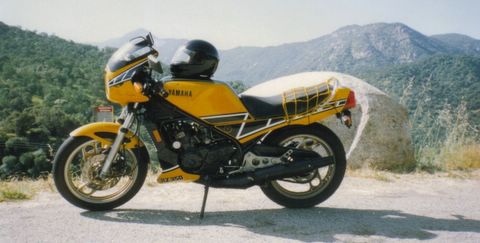
This is a 1985 Yamaha RZ350 Kenny Roberts signature edition. I bought it used two days after I returned from duty in Somalia. Two days after that I was off on a five day, 2000 mile trek across California, during which I took this photo while in Sequoia National Park. I never raced this bike, but I had hours of enjoyment riding it on the mountain and canyon roads of Southern California.
The RZ was a liquid cooled, 350cc two-stroke twin with an exhaust port power valve that varied the exhaust port height based on RPM and throttle position, resulting in a broader torque curve and smoother power delivery, much the same as variable valve timing does in a 4-stroke engine. The RZ was the next and, sadly, last generation of Yamaha 2-strokes available in the US for use on public roads, due to tightening emissions standards. It evolved from this next bike, the RD400...
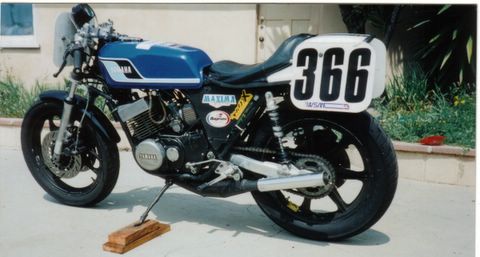
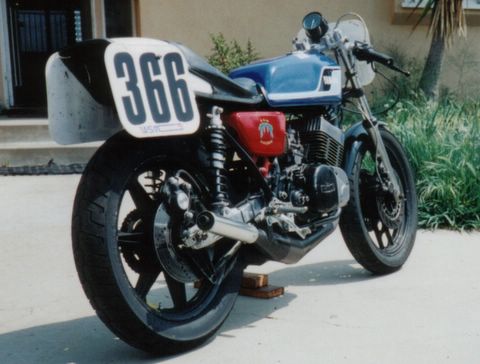
This was my first competition road racer, a 1977 Yamaha RD400. A 400cc two-stroke twin, it originally started life as a mild-mannered street bike making 36 horsepower at the rear wheel. A few seized and burnt pistons and one completely grenaded motor later I had developed it into a reliable 60-plus horsepower screamer with precision boring, bigger 34mm carbs, racing expansion chambers, electronic ignition, precision head milling to yield tighter (.030") squish clearance and 15:1 compression, and extensive cylinder porting (that I did myself, about 12 hours per barrel) based on factory Yamaha TZ250 production road racer specs. That translates into nearly 75 horsepower when measured at the crankshaft, and, at roughly 24 cubic inches, that translates into 3 horsepower per cubic inch.
I rebuilt the bike from the frame up, using parts from many different machines to upgrade various aspects of performance, but, although it was light (in race trim as you see it here it weighed a paltry 275 lbs.) and fast, it wasn't a very successful race bike because it needed more suspension development to remain stable in high speed corners - the bike absolutely scared the shit out of me in Turn 8 at Willow Springs! But it was fast in a straight line and sounded magical turning over 10,000 RPM at wide open throttle.
So I abandoned that bike for this one....
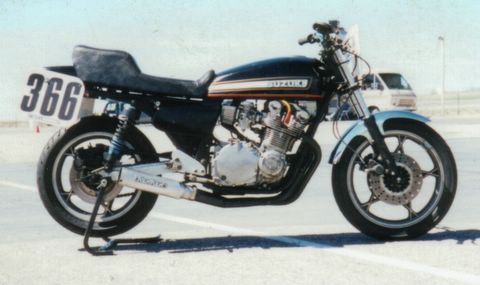
This is a 1978 Suzuki GS1000 I purchased in boxes for $50 from my friend Todd. If the 1960's was the muscle era for cars, the late 1970's was the equivalent for 1-liter bikes. The 1969 Honda CB750 revolutionized the performance motorcyle, and bikes to follow, like the Kawasaki Z-1, followed by the KZ1000 and the Suzuki GS1000, offered the performance motorcyclist speed and handling that had only been previously available from European marques, namely Duccati and MV Agusta, since the Brits hadn't made a competitive road racer since the late 50's to early 60's Norton Manx.
This bike remained relatively stock. The motor, blueprinted and bored 3mm using Wiseco pistons, was an otherwise stock affair, using all-stock internals including the head, cams, rods, and crank. However, I fitted the engine with larger 34mm CV carbs, electronic ignition, and a sweet 4-into-2-into-1 exhaust header. Still, it made 100 horsepower at the rear tire and made usable power to over 10,000RPM, and was an absolute blast to ride, offering great high-speed stability, thus inspiring confidence enough to garner a few podium finishes.
The forks were fitted with stiffer springs; the rear shocks were longer custom after-market units for more wheel travel; and an aluminum swing arm from the later GS1100 offered less unsprung weight and bolted-up with no modifications. Wheels and brakes remained stock and woefully inadequate.
I was working on another big-port L-model head, milled .040", and had some aggressive Andrews cams to take advantage of the increased flow and compression which would have yielded another 25 or so horsepower. I also had some 18" wheels and brakes with larger rotors and 2-piston calipers from the later GSXR series waiting in the wings, to be fitted for better cornering ability and decreased stopping distance. Then I decided to move to New Zealand.
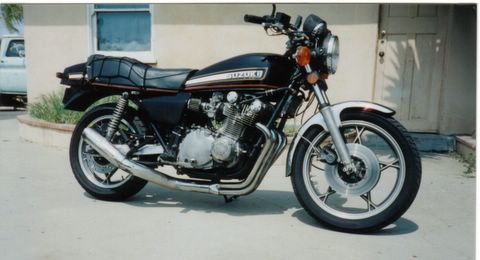
This is the race bike's identical twin street counterpart. Except for the exhaust, this bike was all stock and original. I purchased it barely running and filthy for $600, but I cleaned it and fixed it up, using it for daily transportation for over a year without a hitch. It was because I had so much fun riding this bike on the street that my friend, fellow racer and former class champion, Todd, talked me into buying his unfinished, identical bike shown above to go racing. This street bike soon became a parts donor for the racing effort.
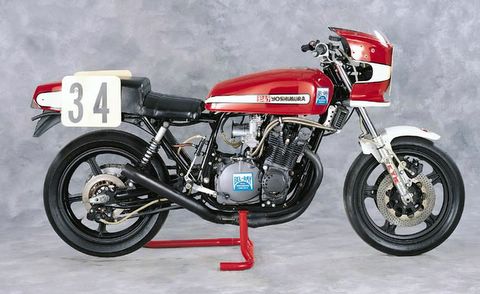
In contrast to a privateer effort like mine, this is the Yoshimura-prepared GS1000 that
Wes Cooley rode to the AMA Superbike Championship in 1979 and 1980. The bike developed over 140 horsepower at the rear tire, could run the quarter mile in the 9-second range with trap speeds just under 140mph, and top out at nearly 170mph, hindered largely due to lack of aerodynamic efficiency. And it handled fairly well for its day, considering that these bikes were pushed well beyond their intended limits in the hands of guys like Cooley.
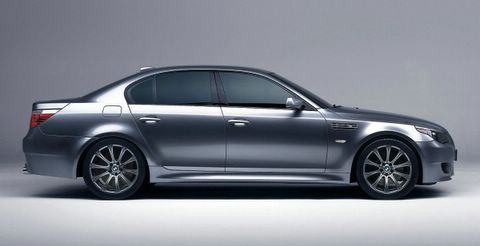


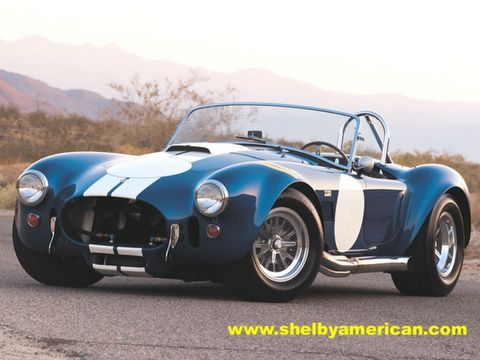
 Bohemian Conservative
Bohemian Conservative












